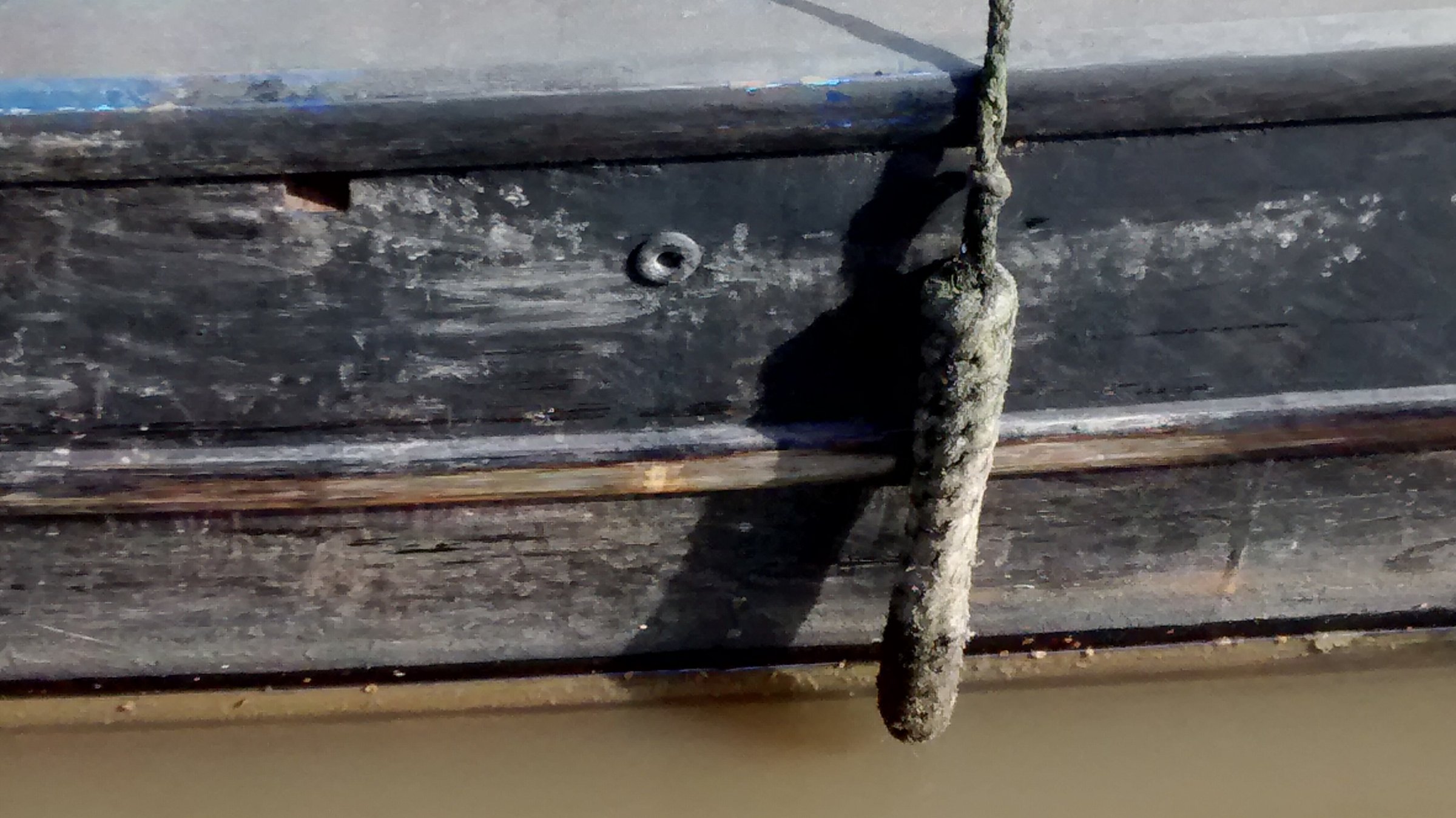-
Posts
1,328 -
Joined
-
Last visited
Profile Information
-
Gender
Male
-
Interests
Canal boat equipment. Model aircraft, Narrow gauge railways.
-
Boat Name
Grace
Recent Profile Visitors
6,402 profile views
Top cat's Achievements
Rising Star (8/12)
65
Reputation
-

Under Foot Insulation / Carpeting
Top cat replied to The Grumpy Triker's topic in Boat Building & Maintenance
We use cheap "disposable" carpet and expect to change it every 2-3 years, its a fairly dark fleck that doesn't show the dirt. But we put it down over a thick undelay which cost more than the carpet T C- 29 replies
-
- insulation
- carpets
-
(and 1 more)
Tagged with:
-
The alternator that supplies thedomestic batteries is marked CJF Rotating electrics. REP Lucas A517. 0012010006. Code C70801. The (often wrong) documentation that came with the boat lists it as a110A alternator, however my local (very knowledgeable) car parts man tells me its identical to the 70A Lucas A127. This sort of makes sense as apart from labelling it looks identical to the start alternator that has 70A written on it and is described as such in the documentation. Also the most I've ever seen it put out is about 70A. So my question is. Is the A517 just a A127 in disguise? I've attatched a photo of the label and the rear T C
-
I've had a look at the brushes on the domestic 12v alternator and the Travel power, both seem to be Ok. Here's a picture of the travel power brushes ( since cleaned up) So unless I'm missing something 4500 hrs seems to be well within the expected life . T C
-
We had a small leak on a hose going to the skin tank from the header tank, trouble is the heat from the engine evaporated it before I could find it. To find it I wrapped tissue round the ends of the pipes, any leakage turned the tissue blue from the antfreeze even if it evaporated. Its important to find it as a failing pipe can fail suddenly T C
-
Thanks Mike have contacted him T C
-
My Izusu engine has about 4500 hrs on it and I'm wondering if I should be doing any preventative maintenance on the alternators and travel power ? Like checking the brushes etc. The start alternator is an HMI 900021-ALS rated at 70A The domestic is a Lucas A517 rated at 110A The travel power is a Dometic 400 rated at 3Kw with a silver control box. The units appear to be functioning correctly apart from intermittent flashing of a neon on the travel power at low revs but fiddling with the connector fixes it. Is this a case " If it aint broke don't fix it" or am I wise to pre empt a breakdown. If I should be changing brushes etc anyone know where to get them and point me to instructions Thanks T C
-
We have an Izusu too, I fill the header tank to about 2" from the top, any more and it comes out as the engine heats up. Does your engine have a small pipe coming out by where you put the water in, this is an overflow get a plastic milk bottle cut a cross in the lid and shove the pipe in it, psh the bottle down besides the engine. If you are overfilling the header tank the water will end up in the bottle and you will know.
-
There is no evidence of bulging. From one comment it sounds like fiddling with the Adverc won't achieve anything and it the internal regulator in the alternator thats giving the higher voltage. Did I interpret that correctly? I've considered my batteries to be charged when the current at 14.4V drops to 1% of the original capacity at C/20. But if we are doing a long day we go beyond that down to in some cases 0.1%. Once we stop cruising then the solar takes over, sometimes it won't cut in till the batteries drop below about 13.4 then it maintains them at 13.8 while it can. Recently the oldbatteries have been going straight to 14.4V on starting the engine, the current varies according to discharge. This makes me wonder about the remaining electrolyte levels T C
-
Umm.. I thought I picked up the idea of max voltage from someone on here. I have asked the suplier ( Multicell) what the max voltage should be but they haven't given me a straight answer. There's nothing special about these batteries, they did about 350 cycles so only about a year for a liveaboard. I wouldn't recommend or un recommend them , I put the relatively long life down to being a bit obsessive about charging. The previous set of mismatched sealed and open batteries lasted us 5 years plus what ever time the previous owner had them. From reading various comments it seems like my theory is incorrect, I may need to re evaluate my ideas on the care and feeding of the next lot of batteries. I'm considering adjusting the Adverc to give them a slightly higher charge voltage, the spec says 14.2 -14.6V for normal absorption and 14.6-14.9V for fast charge absorption. Float 13.8V T C
-
I can see that they have all leaked electrolyte, which I interpret as an indication that they have been taken to too high a voltage. T C
-
My sealed liesure batteries have lost most of their capacity after 4 years, with evidence of electrolyte leakage. In normal use , ie cruise for 5 -7 hrs then use power overnight, the max voltage they get is about 14.5V, which shouldn't do any harm. But we sometimes do day trips from the home mooring starting with the batteries fully charged from the solar panel and don't bother to start the fridge or put any other loads on the system. If we do that then the voltage goes up to 14.78V which the batteries don't like long term. It seems that running the alternator with no load gives excess voltage despite the Adverc controller. So in future we will start the fridge before we go to load the system. I just thought I'd mention this in case anyone does what we do and are cooming their batteries . Top Cat
-
Just buy one of those big rechargeable led torches and put it on the slide pointing to the right , also useful if the headlamp bulb blows T C
-
I should point out that when Rose boats did the blacking 3 years ago with Intertuf they did an excellent job. The problem could be with learning to use new technology or the new technology aint as good as the claims. Time will tell. TC
-
It's difficult to say, I have a habit when ascending narrow locks to get off the starboard side leave the boat in gear, putting the tiller over that way so the boat drives itself out. But that does scrape the rubbing strip. However I have been doing that for years and the previous Intertuf blacking seemed to last very well in that location. The other rubbing strips are only slightly worn. I have found no evidence of flaking. My key point was go to someone with experience in using the stuff, having only half the expected amount applied can't be good. T C Top Cat
-
I had my boat done with Keelblack back in March, its pretty much gome from the rear starboard rubbing strip after 90 hrs cruising and 135 locks. The rest seems fine. A man from Keelblack has come to look at it and is blaming the company that did the application ( Rose boats)He does have a point in that only about half the expected amount of blackingvwas used. Apparently companies who normally use conventional blacking tend to apply it too thin and put it back in the water too soon. So if you do use it go to someone with experience with the stuff, Rose had only done one boat with it before mine. I will be discussing the situation with Rose boats once I have a report from Keekblack, but I'm not expecting to get much of a positive response. Any one want to buy 12.5 litres of Keekblack? Should do a 60' boat, pm me if interested. Top Cat










